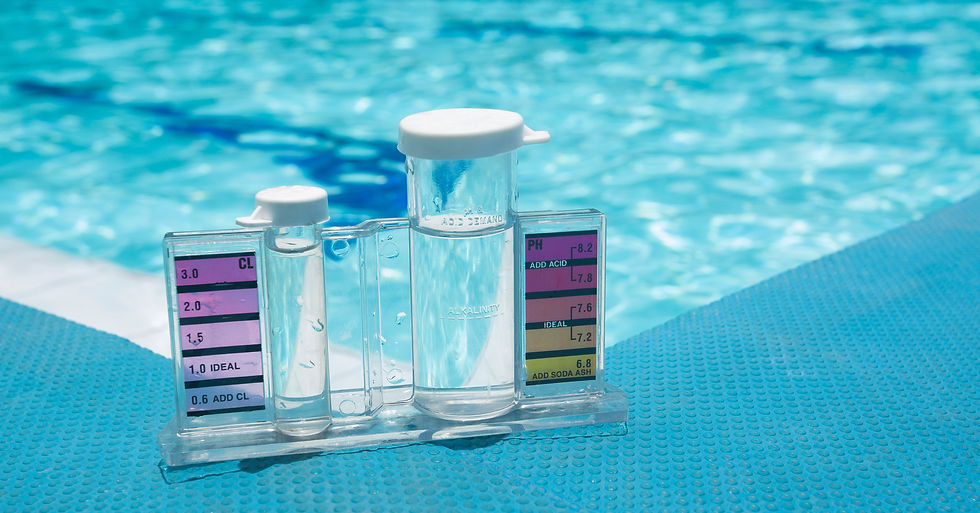Carl Wilhelm Scheele: Poisonous Chemistry
- Sylvia Rose

- Nov 8, 2024
- 5 min read
Updated: Nov 8, 2024
Carl Wilhelm Scheele (1742 - 1786) is a self-taught German-Swedish chemist whose work has strong impact on chemical sciences of the day. He invents the precursor to nitroglycerin and causes the death of Napoleon. He discovers hydrogen and the power of chlorine.

At age 14 Scheele becomes apprentice to a pharmacist, inspired by family friends who teach him how to read prescriptions and the meanings of chemical signs. During his eight-year tenure he stays up late into the night reading and conducting experiments.
Carl Wilhelm Scheele's discoveries include:
1. Tartaric Acid (1770)
In his research on cream of tartar, Scheele identifies tartaric acid, a compound still used in baking and winemaking. Tartaric acid, a white crystalline organic acid, is naturally found in may fruits.
It's especially plentiful in grapes, as well as in tamarinds, bananas, avocados, and citrus fruits. During fermentation, its salt, potassium bitartrate, known as cream of tartar, forms naturally.

2. Oxygen (1772)
Although Joseph Priestly is often credited with the discovery of oxygen, Scheele is considered the first to isolate the gas. Scheele describes oxygen while heating mercuric oxide. He calls it "fire air" and details its properties in his book, "Chemical Essays."
3. Chlorine (1774)
Scheele discovers chlorine gas when he treats hydrochloric acid with manganese dioxide. His notes on this discovery predate those of the chemist Humphry Davy, who later names it "chlorine."

Scheele notes its greenish color and potent bleaching properties. Today it's recognized as effective for water treatment, killing about 99% of bacteria.
In humans, sudden high-level exposure causes shortness of breath, severe coughing, nausea, vomiting, dizziness, headaches, chest pain, stomach discomfort and corneal burns. Prolonged exposure to chlorine gas can cause chest pain, coughing, sore throat and coughing blood.
4. Manganese (1774)
While investigating different ores, Scheele identifies the element manganese. He separates it from its toxic ore, pyrolusite, and describes its chemical properties and distinct behavior in reactions. Credit for first isolating manganese is also given to Johan Gottlieb Gahn.
Manganese is essential for the body to create connective tissue, bones, blood clotting factors and sex hormones. It is also involved in fat and carbohydrate metabolism, calcium absorption, blood sugar regulation, normal brain and nerve function.

5. Hydrogen (1776)
Although Cavendish is noted for his work with hydrogen, Scheele recognizes hydrogen gas' properties during his experiments with acids and metals. He referred to it as "inflammable air."
Before this, In 1671, Irish scientist Robert Boyle discovers and describes the reaction between iron filings and dilute acids, which results in the production of hydrogen gas. The first hydrogen-filled balloon is invented by Jacques Charles in 1783.
Hydrogen provides lift for the first reliable form of air-travel following the 1852 invention of the hydrogen-lifted airship by Henri Giffard. German count Ferdinand von Zeppelin promotes the idea of rigid airships lifted by hydrogen, later were called Zeppelins.

6. Barium (1774)
Scheele discovers barium sulfate, a significant addition to the list of known elements. His work involves isolating barium salts, later recognized as essential components in chemical processes. This alkaline earth metal is used as fireworks and medical imaging.
7. Arsenic (1775)
Although the discovery of arsenic is credited to Albertus Magnus in the 13th century, Scheele isolates arsenic and determines its properties. His work on arsenic compounds greatly contributes to understanding both its toxicological effects and its applications.
Arsenic has been known for thousands of years. During the Bronze Age (c. 3300 - 1200 BCE) arsenic is often used instead of tin to make a harder bronze. The classic bronze formula is 88% copper and 12% tin. Smiths could replace all or part of the tin with arsenic.

8. Lactic Acid (1780)
Scheele derives lactic acid from sour milk and fermented foods. He's the first scientist to describe lactic acid in 1780. Today, lactic acid is crucial in food science, fermentation processes and production of yogurt, consumed by millions worldwide.
Lactic acid bacteria are also responsible for the processes of fermentation in cheese and pickles.
9. Glycerol (1783)
Scheele describes glycerol / glycerin and its properties. This eventually leads to development of nitroglycerin as an explosive substance in the following century. Glycerol is used in soap making, cosmetics and food preservation.

10. Molybdenum (1778)
Scheele identifies molybdenum from the mineral molybdenite. Although not isolated until later, this discovery was vital in understanding this rare transition metal, which is now used in steel production to enhance strength and resistance to corrosion.
11. Lead Compounds (1779)
In his exploration of lead compounds, Scheele finds a way to produce lead acetate, commonly known as "sugar of lead." It's historically used in food and beverage preservation, although toxic in larger quantities.
12. Tannic Acid and Phenols (1783)
In 1783, Scheele makes progress in organic chemistry by isolating tannic acid and studying phenols. Tannins are widely used in the leather industry, often used as mordants in dyeing, and contribute to the flavor of wines.

Ancient Greeks and Romans use oak tannins to tan animal skins into leather. In China tanning is known through history. Different colors, textures, and durability of leathers are achieved by using different formulations of plant tannins referred to as “tanning liqueurs”.
13. Scheele's Green (1778)
Scheele synthesizes Scheele's Green, a brilliant pigment made from copper arsenite. While it's widely used in art, its toxic properties later raise health concerns. By the time of the impressionists it's replaced in palettes with Paris Green ... which also contains arsenic.
At the time the arsenic is less concerning to artists than the paint's tendency to darken. Other poison pigments include orpiment (arsenic) and vermillion (mercury). Like Paris Green, Scheele's Green is also used as an insecticide.
Scheele's Green is known to contribute to the death of Napoleon. During exile Napoleon stays at a house with walls of bright green, a color he loves. He dies of stomach cancer, a disease linked to arsenic poisoning. High amounts of arsenic are later found in his hair.

Scheele's findings advance chemistry and industrial growth. Compounds he uncovers are important in pharmaceuticals, manufacturing and earth science. For instance, chlorine is necessary for making disinfectants in water treatment plants.
The combined exposure to arsenic, mercury, lead, and their compounds, along with potentially hydrofluoric acid and other substances, causes the early death of Scheele. He passes away at age 43 in 1786. Medical experts attribute his death to mercury poisoning.
Non-Fiction Books:
Fiction Books:
READ: Lora Ley Adventures - Germanic Mythology Fiction Series
READ: Reiker For Hire - Victorian Detective Murder Mysteries



